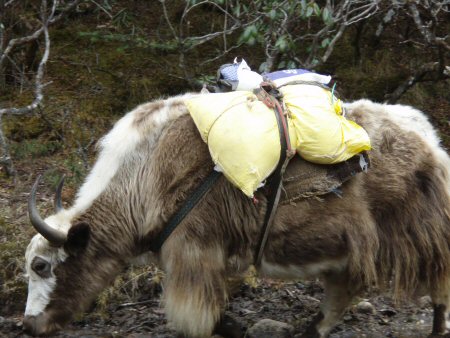 |
Our group had eleven yaks: two groups of four and one group of three. Wherever we stopped for the night, the yaks had to find a place nearby. At the lower elevations they grazed on grass or, for example, the green bodies of bean plants after the beans had been picked. At the higher elevations, they were eating food that had been carried in for them.

 Go
back to Charles Hayden's Home Page
Go
back to Charles Hayden's Home Page